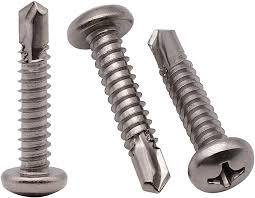Introduction:
Pan head machine screws are versatile and essential components used in a wide range of industries, from construction to manufacturing. Their unique design and characteristics make them the ideal choice for various applications. In this comprehensive guide, we will delve into the world of pan head machine screws, exploring their features, applications, and addressing frequently asked questions.
1. What Are Pan Head Machine Screws?
Pan head machine screws are a specific type of fastener known for their flat, slightly rounded heads. These screws are designed for use with machine threaded holes and are characterized by their versatility, ease of use, and ability to distribute pressure evenly.
2. Types of Pan Head Machine Screws
- Phillips Pan Head Screws: These are perhaps the most common type of pan head screws, featuring a cross-shaped Phillips head for easy driving.
- Slotted Pan Head Screws: These have a single straight slot in the head and require a flathead screwdriver for installation.
- Torx Pan Head Screws: Incorporating a star-shaped pattern, Torx screws offer improved torque transmission and resistance to cam-out.
3. Pan Head Machine Screw Materials
Pan head machine screws are available in various materials, including stainless steel, steel, brass, and nylon. Each material has its own unique properties, making it suitable for specific applications. For instance, stainless steel is highly corrosion-resistant, while brass offers an attractive appearance.
4. Applications of Pan Head Machine Screws
Pan head machine screws are used in a wide array of applications, including:
- Electronics: Securing components and circuit boards.
- Automotive: Holding together various parts in vehicles.
- Furniture: Assembling cabinets, chairs, and tables.
- Construction: Fastening fixtures, brackets, and more.
5. Pan Head Screw Size and Measurement
Understanding screw size is essential when selecting the right fastener for your project. Pan head machine screws are typically measured using three key dimensions: diameter, thread pitch, and length. A common example might be M4-0.7 x 20mm, where M4 denotes the diameter, 0.7 is the thread pitch, and 20mm is the length.
6. Frequently Asked Questions (FAQ)
FAQ 1: What is the advantage of using pan head machine screws?
Pan head machine screws offer a flat, broad bearing surface, which reduces the risk of damage to the material being fastened. Their design provides a clean, finished appearance, making them ideal for visible applications.
FAQ 2: How do I choose the right material for my pan head machine screws?
The material choice depends on your specific requirements. Stainless steel is corrosion-resistant, while steel offers strength and durability. Brass provides an aesthetically pleasing finish. Select the material that best suits the environment and appearance you need.
FAQ 3: Can I use pan head machine screws in outdoor applications?
Yes, you can use stainless steel pan head machine screws for outdoor applications, as they are highly resistant to rust and corrosion. Be sure to choose the appropriate material for the environmental conditions.
FAQ 4: What tools are required for installing pan head machine screws?
You’ll need a screwdriver or a power drill with the right bit, depending on the screw type. Phillips screws require a Phillips-head screwdriver, while slotted screws need a flathead screwdriver.
Conclusion:
pan head machine screw are a fundamental part of countless industries, providing durability, ease of use, and aesthetic appeal. Whether you’re working on a DIY project, assembling furniture, or managing industrial applications, understanding the intricacies of these versatile fasteners can make a significant difference in the outcome of your work. With the right knowledge and selection, you can ensure a secure, reliable, and visually appealing fastening solution.
